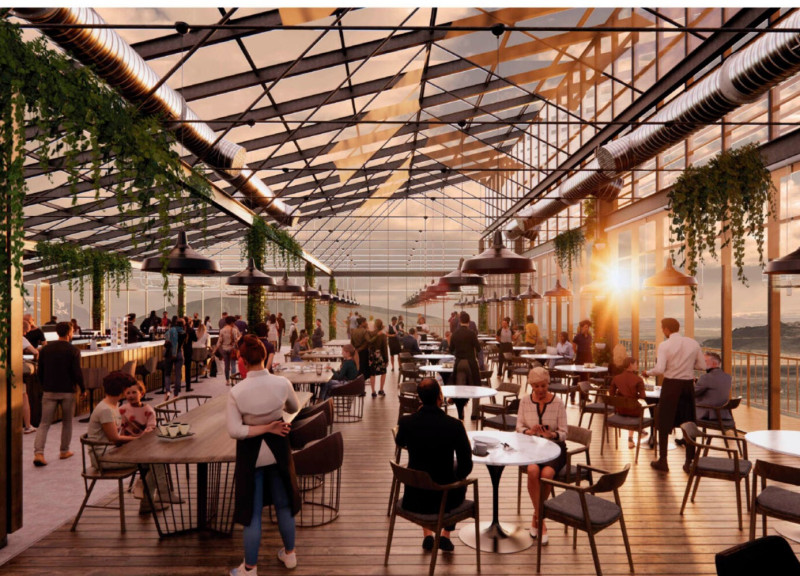5 key facts about this project
The restaurant serves as a social and culinary hub where patrons can engage with the source of their food. The site utilizes passive solar design principles and local materials to enhance energy efficiency. The arrangement of the spaces is organized to create a seamless flow between indoor and outdoor dining areas, allowing for unobstructed views of the natural landscape. This design not only maximizes site potential but also encourages guests to appreciate the environmental context.
Unique Design Approaches in Architecture
The architecture of the Volcánico project showcases unique elements that distinguish it from conventional restaurant designs. One significant feature is the incorporation of a greenhouse within the restaurant structure. This dual-purpose facility not only provides fresh produce for the kitchen but also serves as an educational platform, allowing visitors to observe and learn about sustainable farming practices. The transparent glass roof serves to maximize light exposure, essential for plant growth while creating a visually engaging atmosphere for diners.
Materials play a crucial role in the project’s identity, with a focus on sustainability and locality. The use of a steel structure allows for an open layout that encourages flexibility in space utilization. Additionally, aluminum louvers are strategically placed to optimize natural ventilation and control sunlight, ensuring comfortable temperatures within the greenhouse. Wooden flooring elements further reinforce the connection to nature and introduce warmth to the interior spaces.
Integration of Environmental Elements
The landscaping surrounding the Volcánico Restaurant is designed to blend harmoniously with the natural topography of the site. Native vegetation is incorporated to enhance local biodiversity, while rainwater management strategies help support the site’s ecological balance. The design intentionally links agricultural practices with dining experiences, allowing customers to appreciate the farm-to-table concept.
This project represents a shift in architectural thinking, moving toward models that embrace sustainability while enhancing community engagement. The integration of food production within a dining environment reflects an emerging trend in architecture, where public spaces actively contribute to local ecosystems and encourage greater awareness of food sourcing.
For those interested in exploring this architectural design in depth, further insights can be gained by reviewing architectural plans, sections, and design ideas. The presentation of the Volcánico Restaurant project provides a comprehensive view of its innovative approach to architecture and sustainability.


























